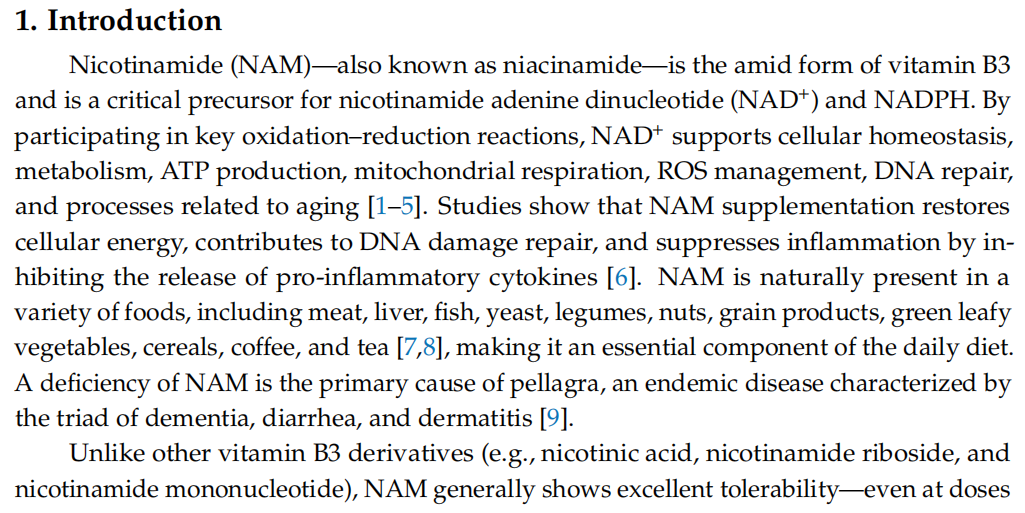
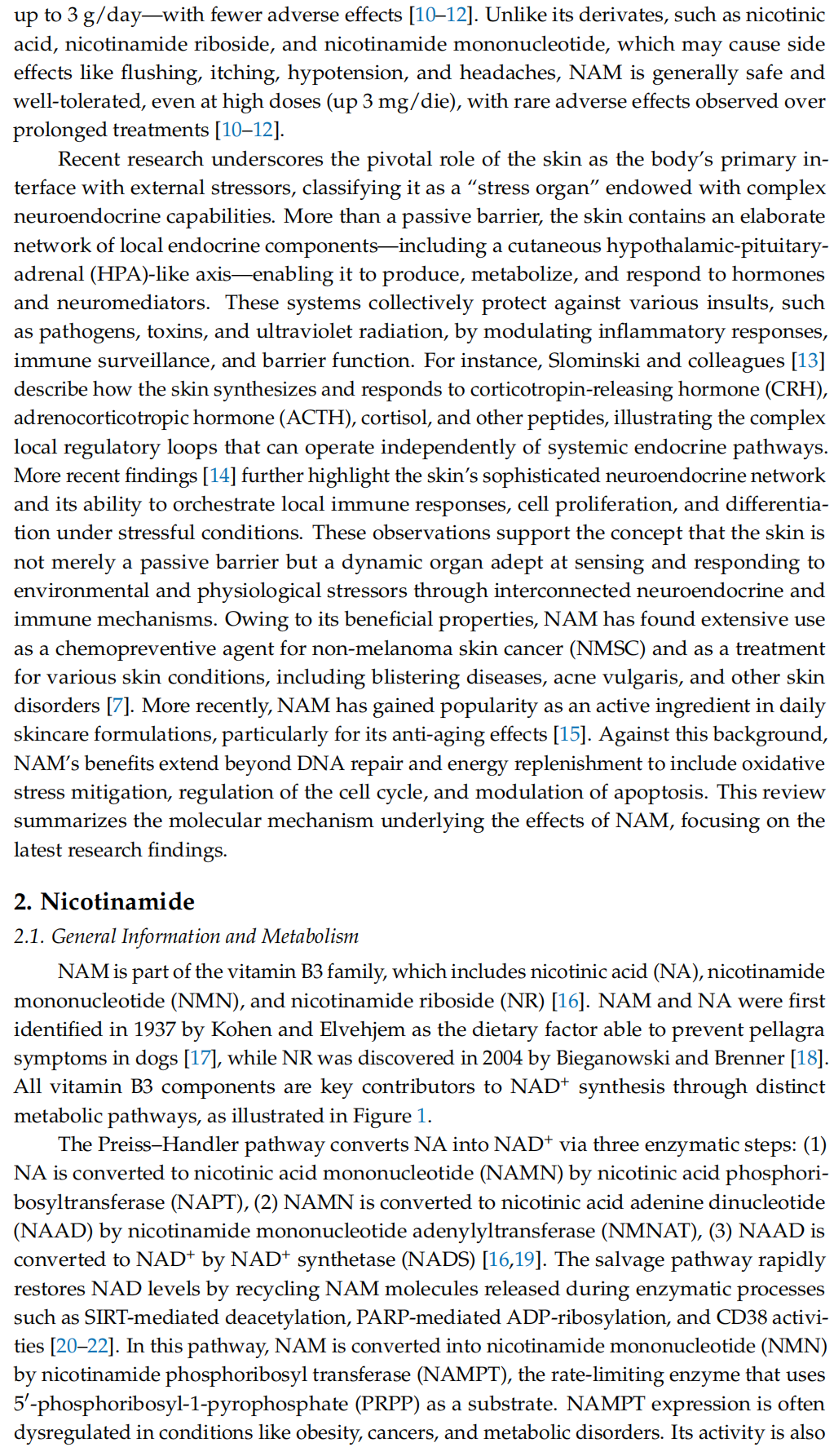
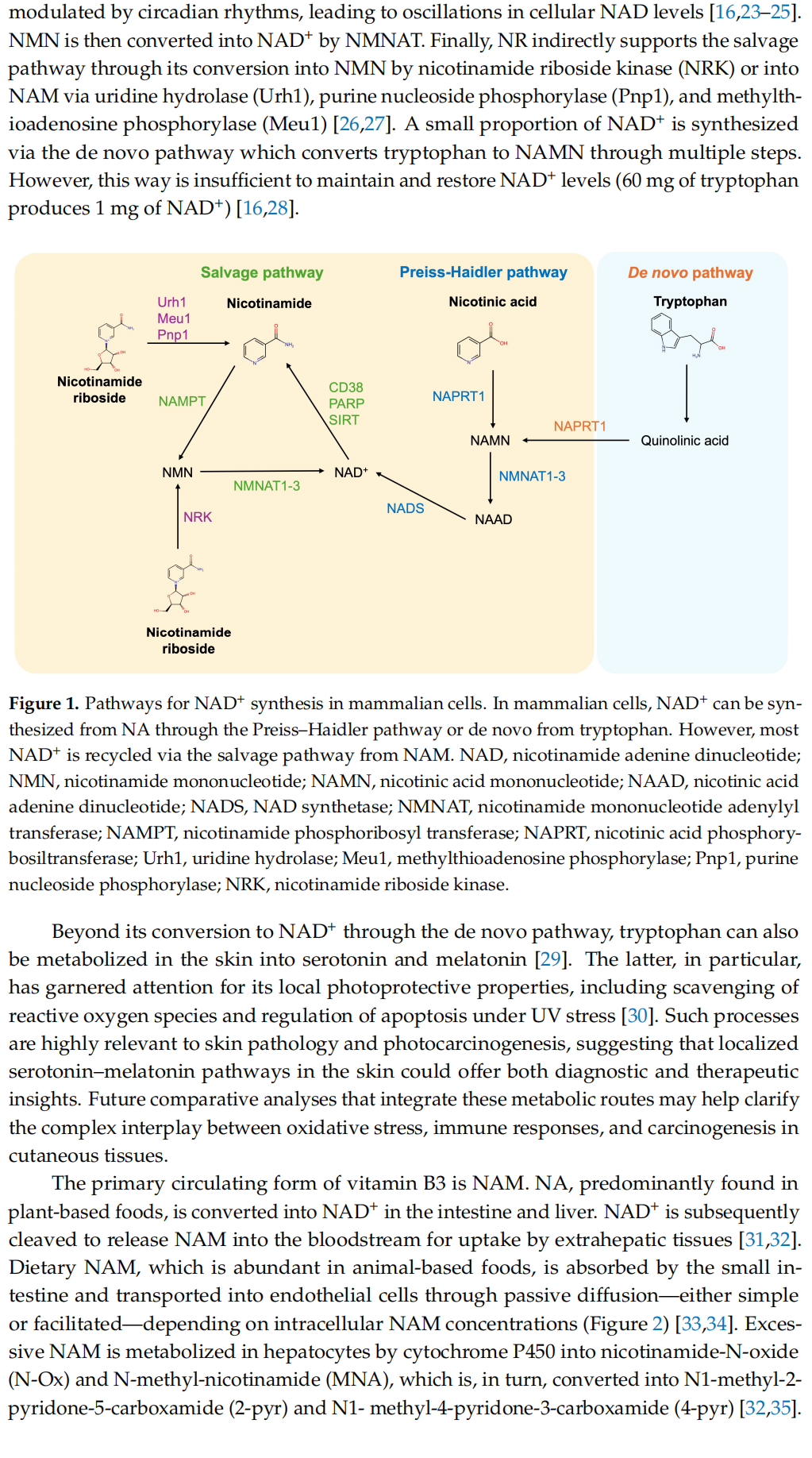
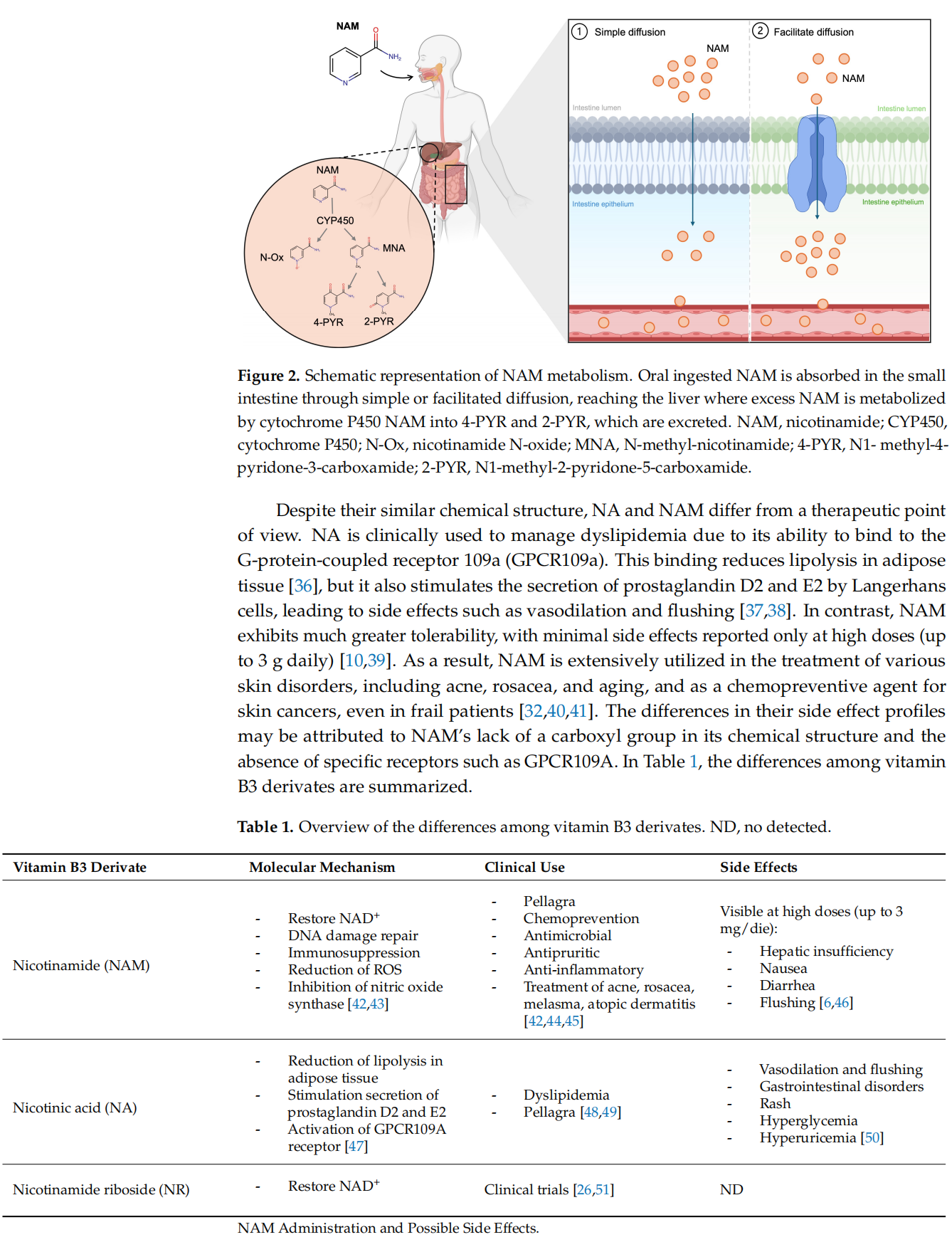
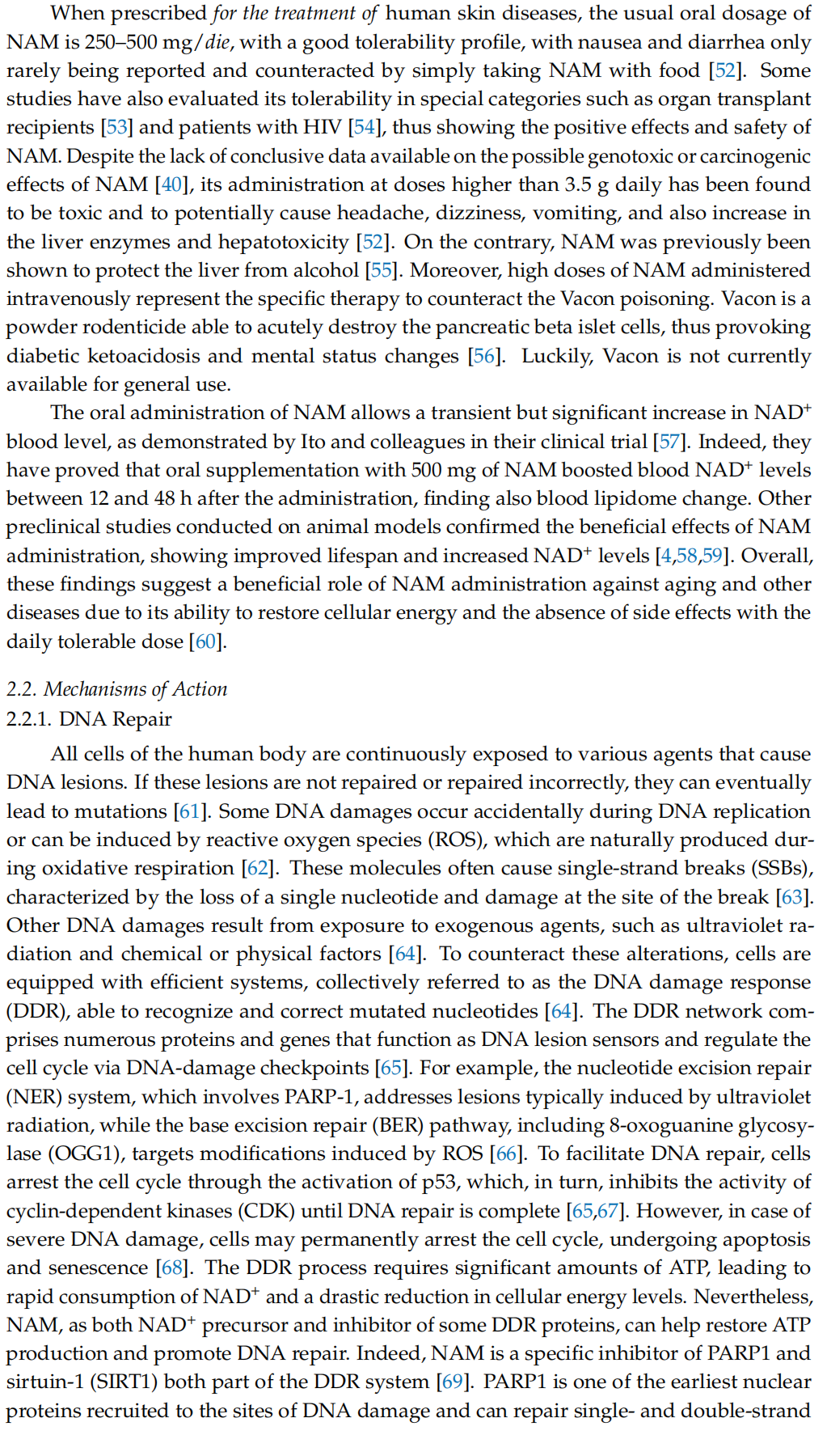
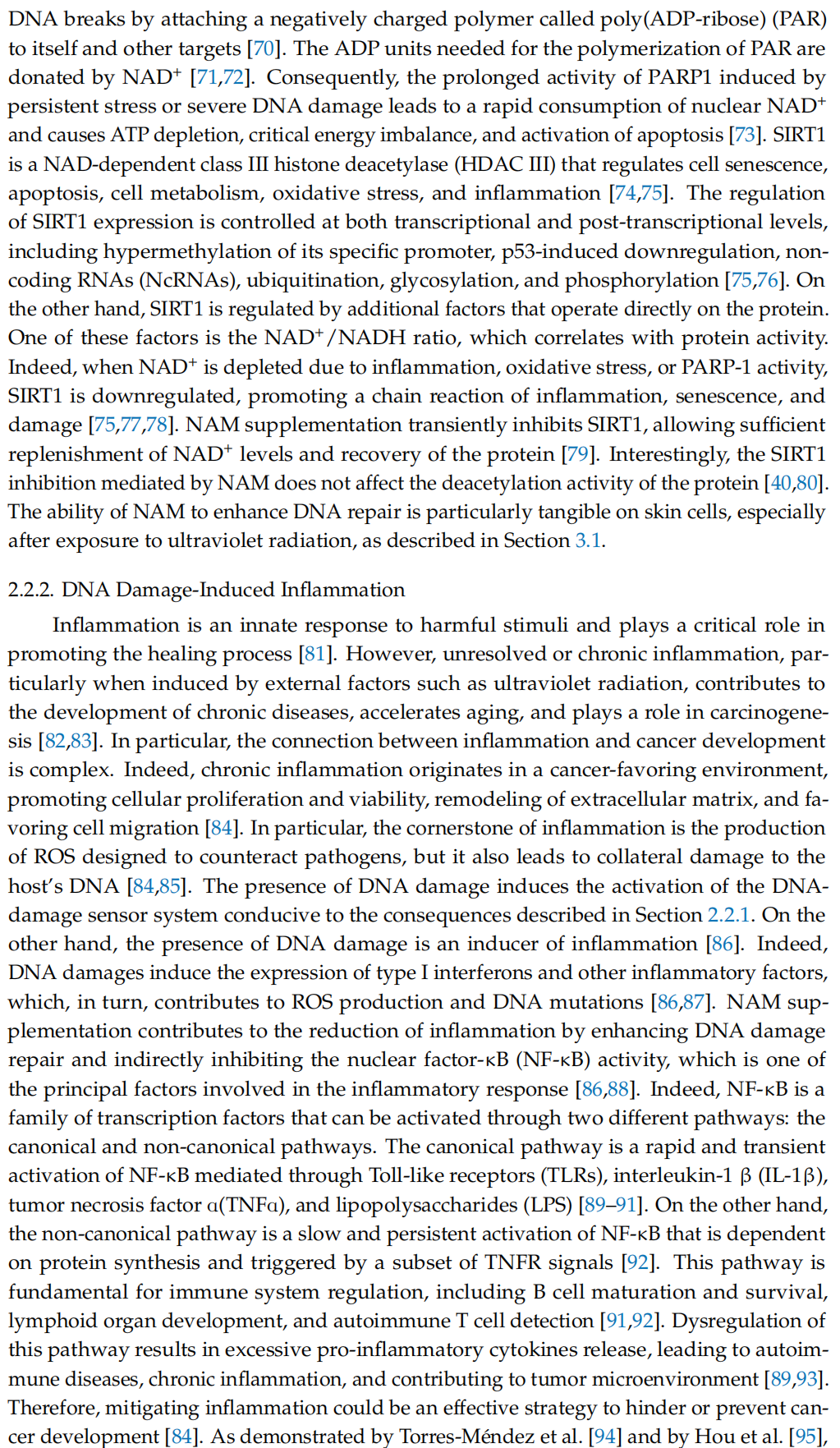
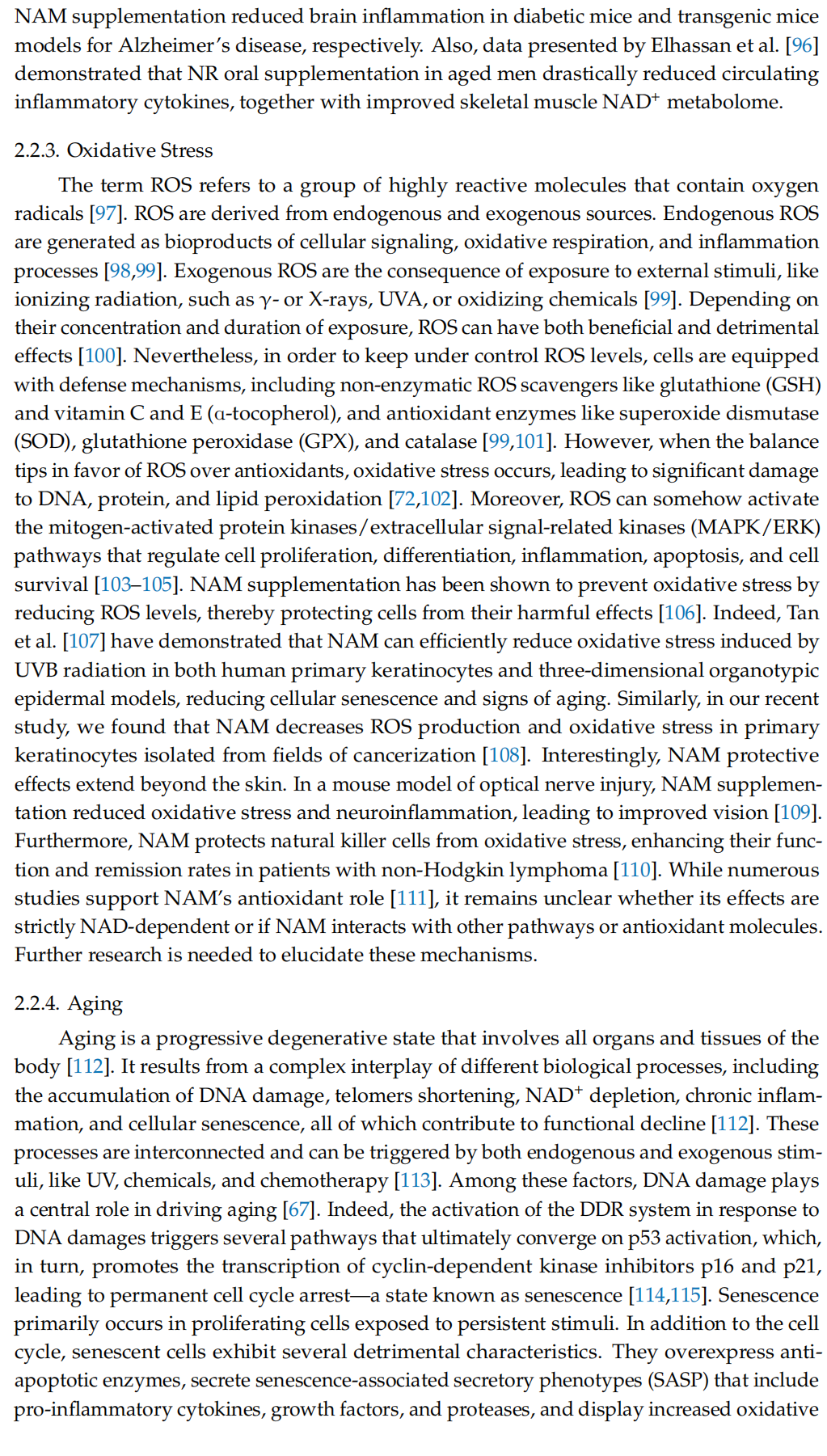
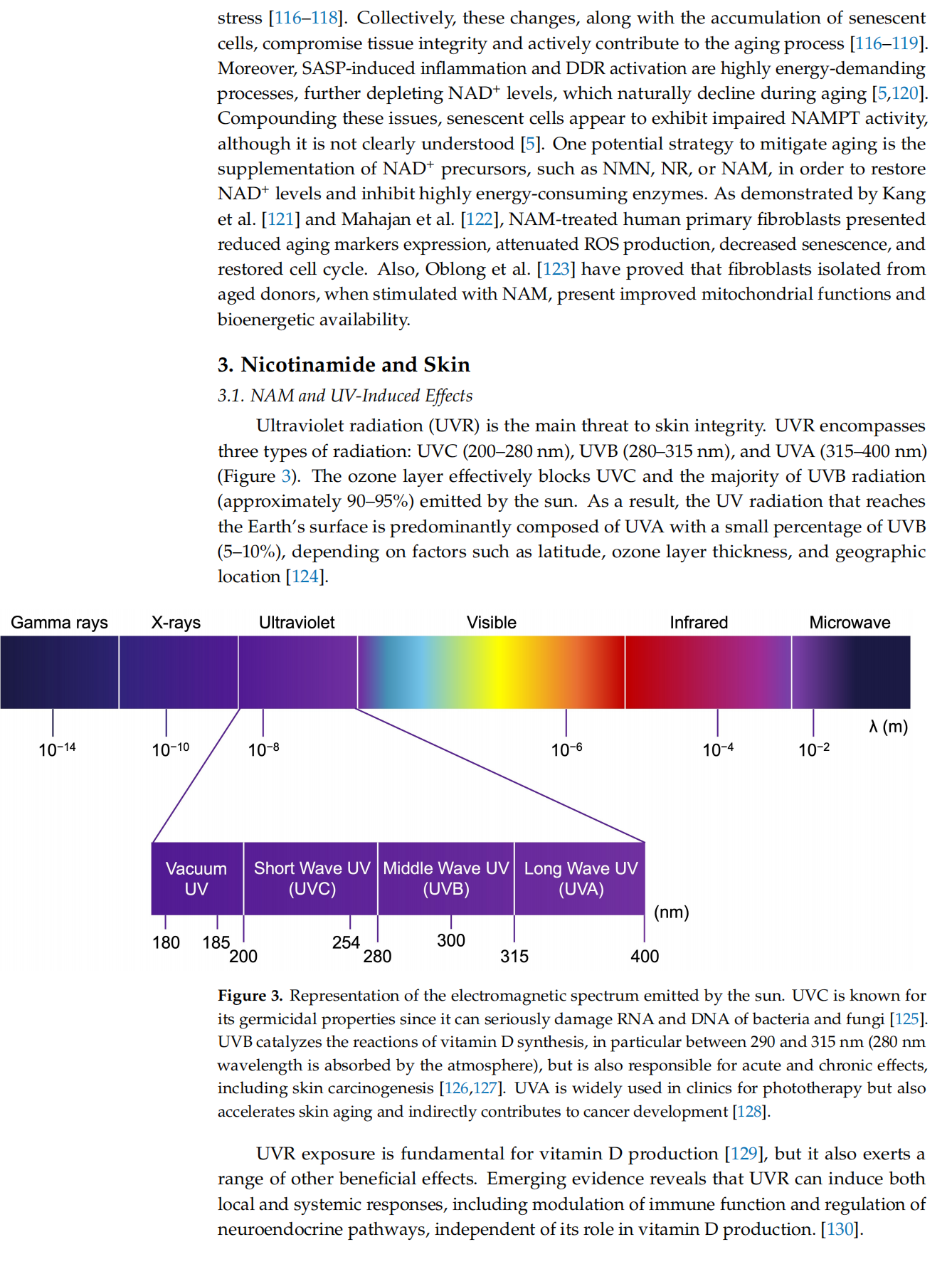

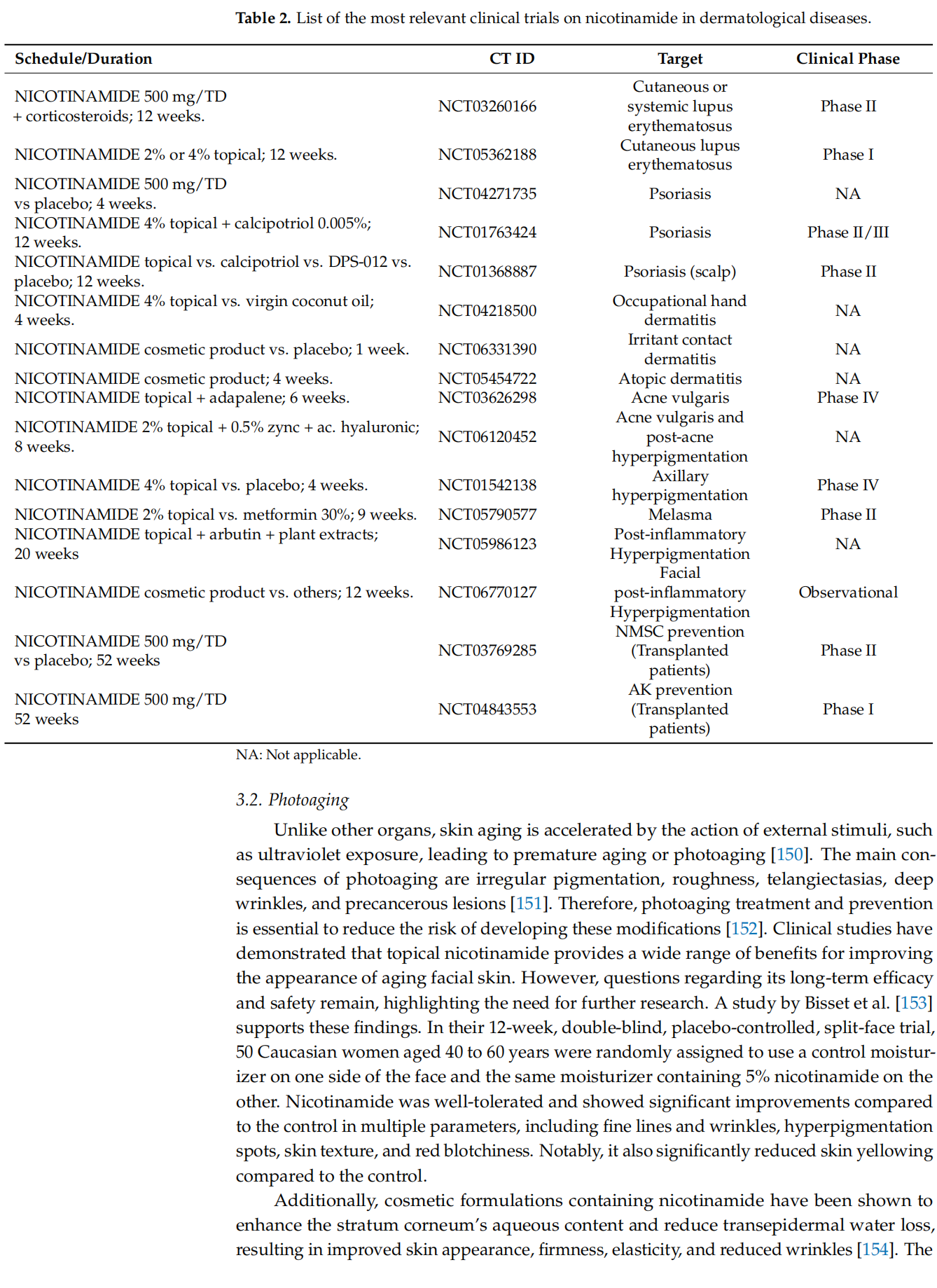
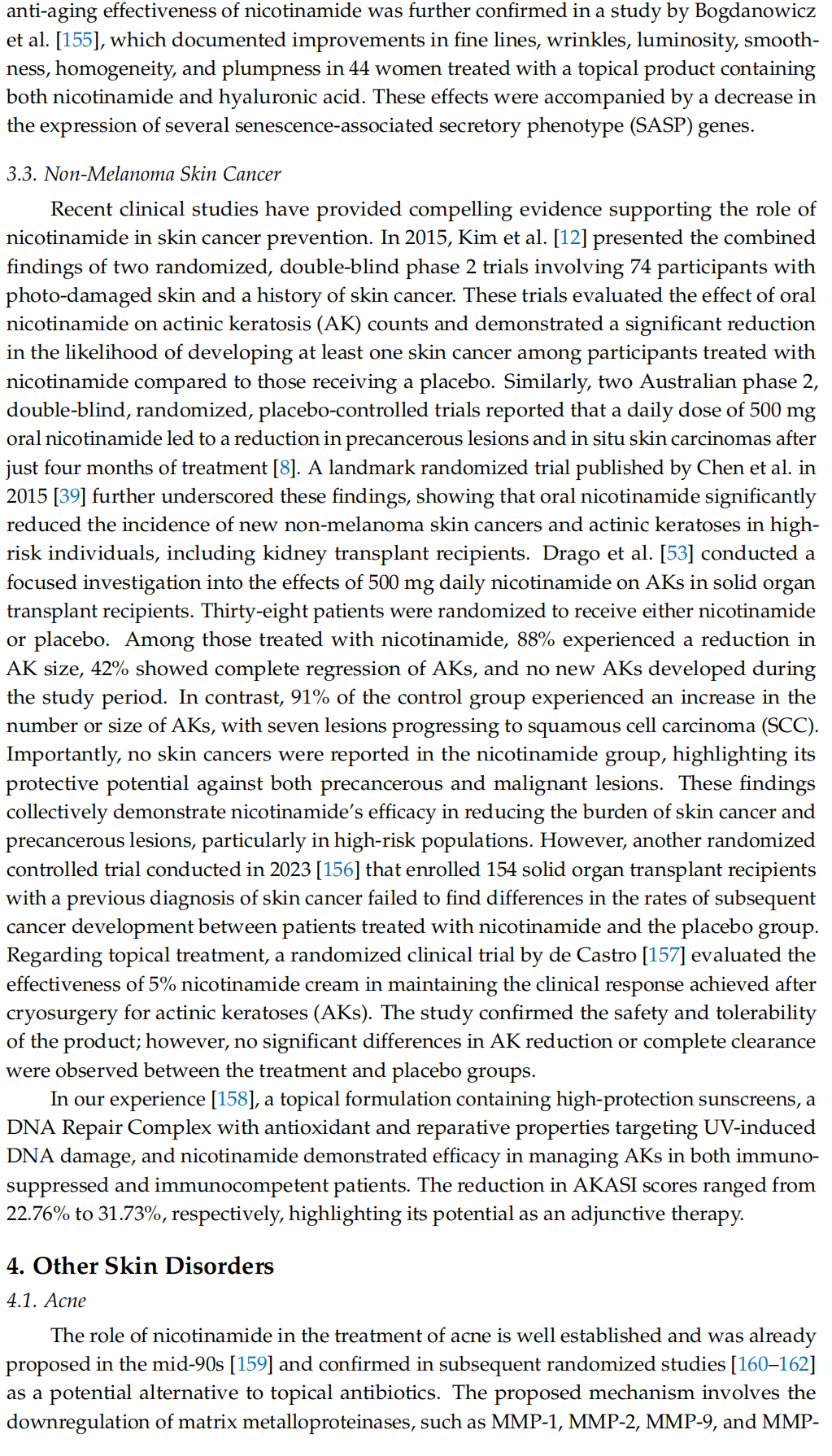
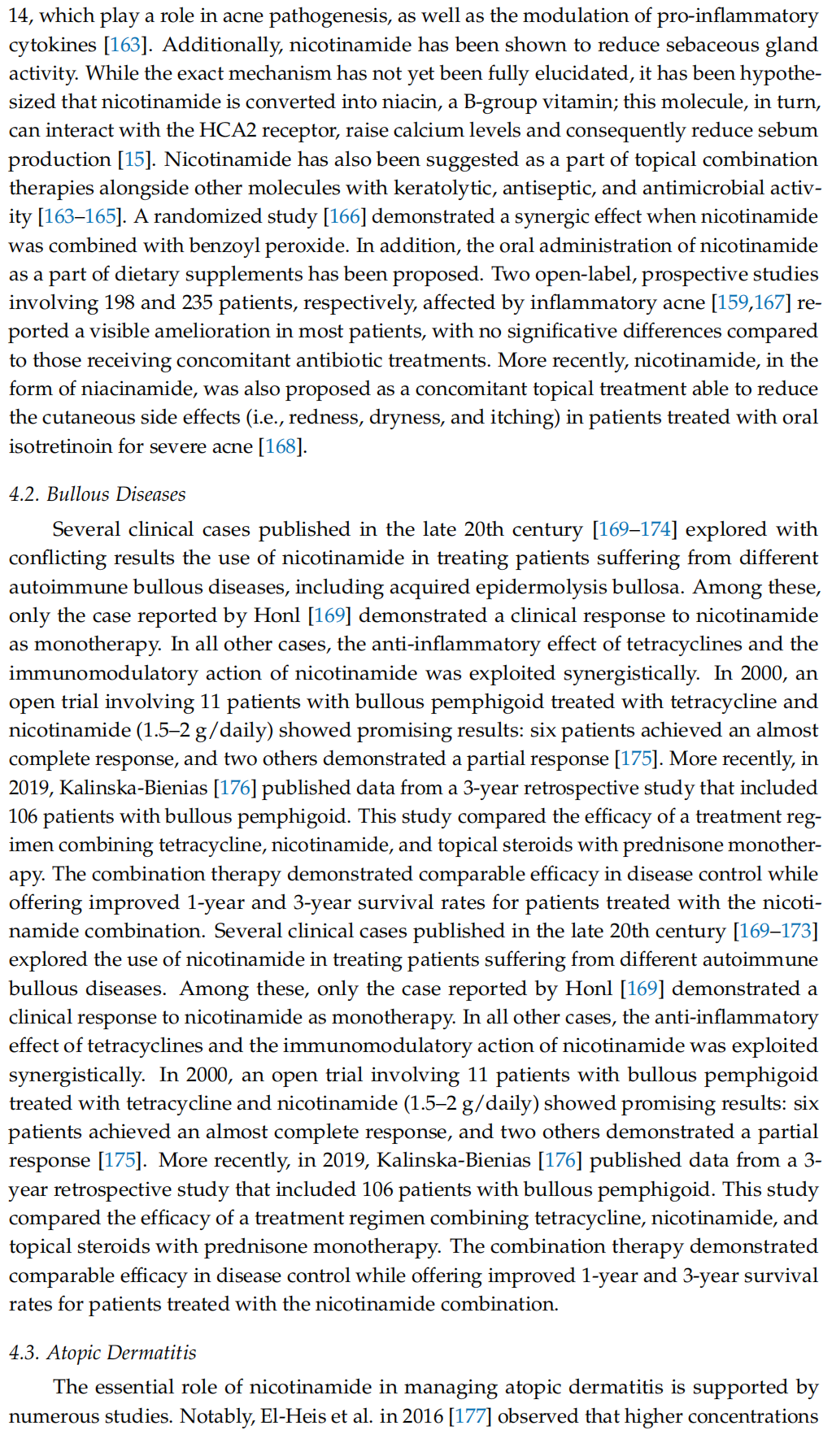
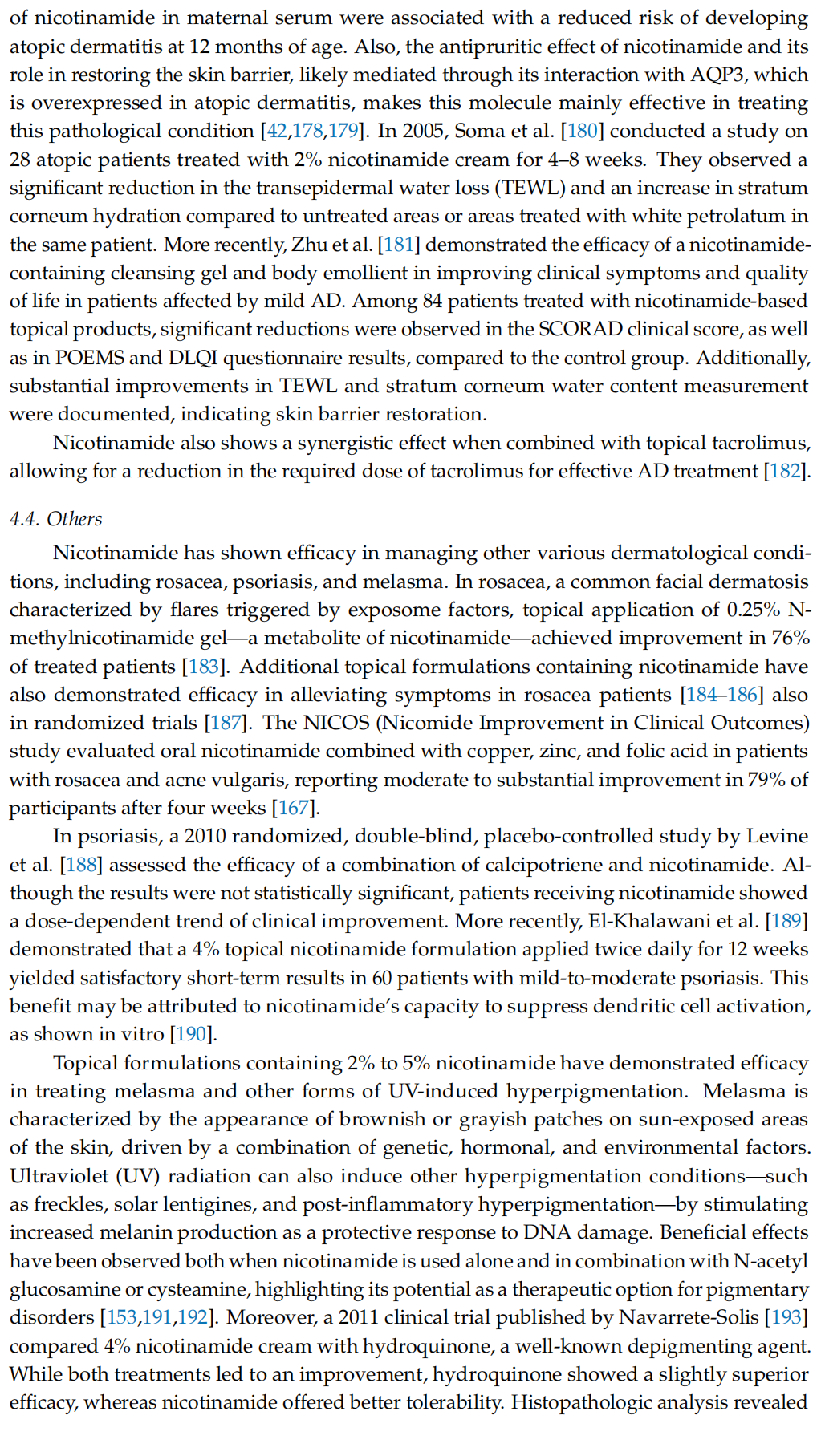
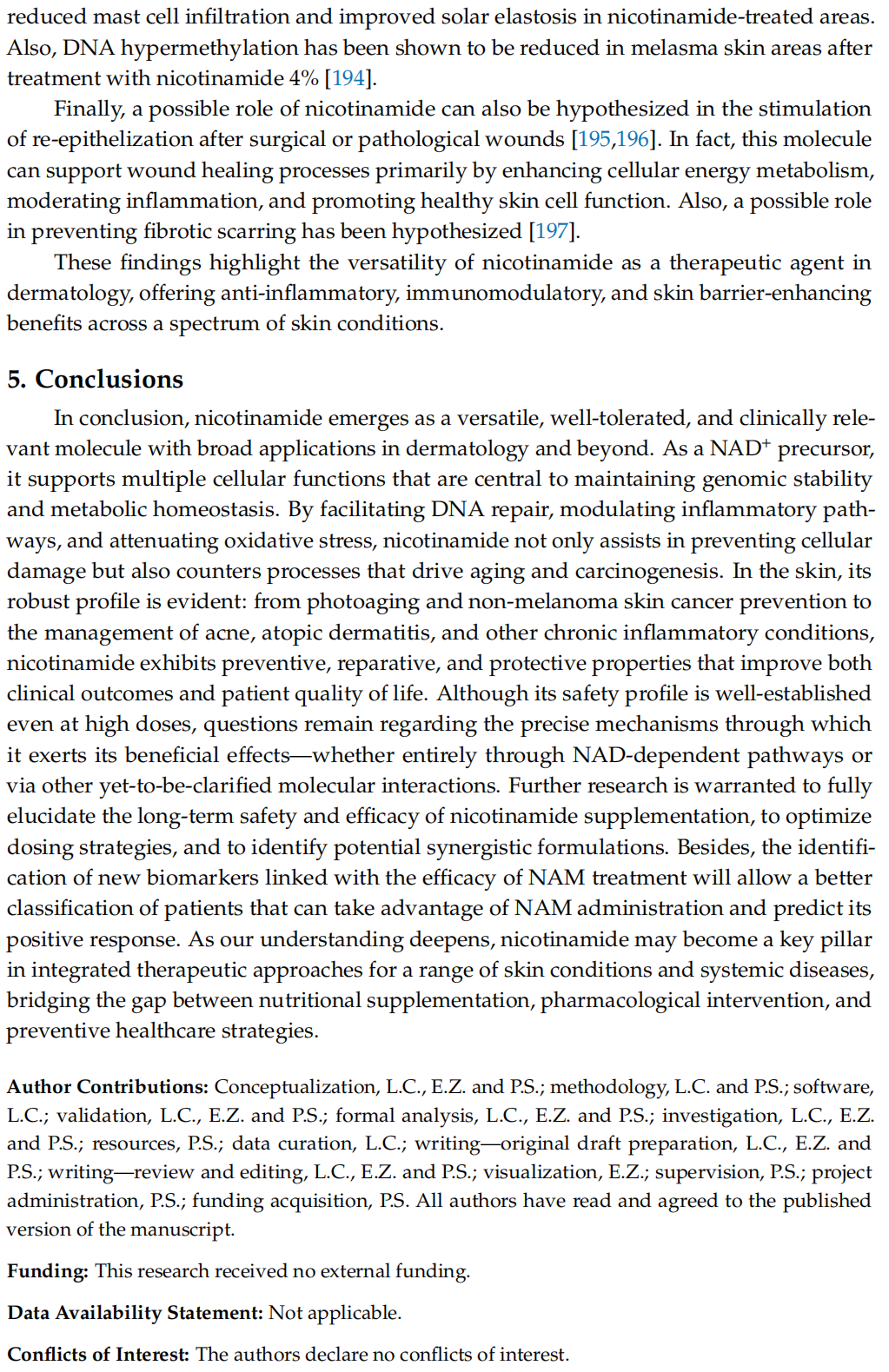
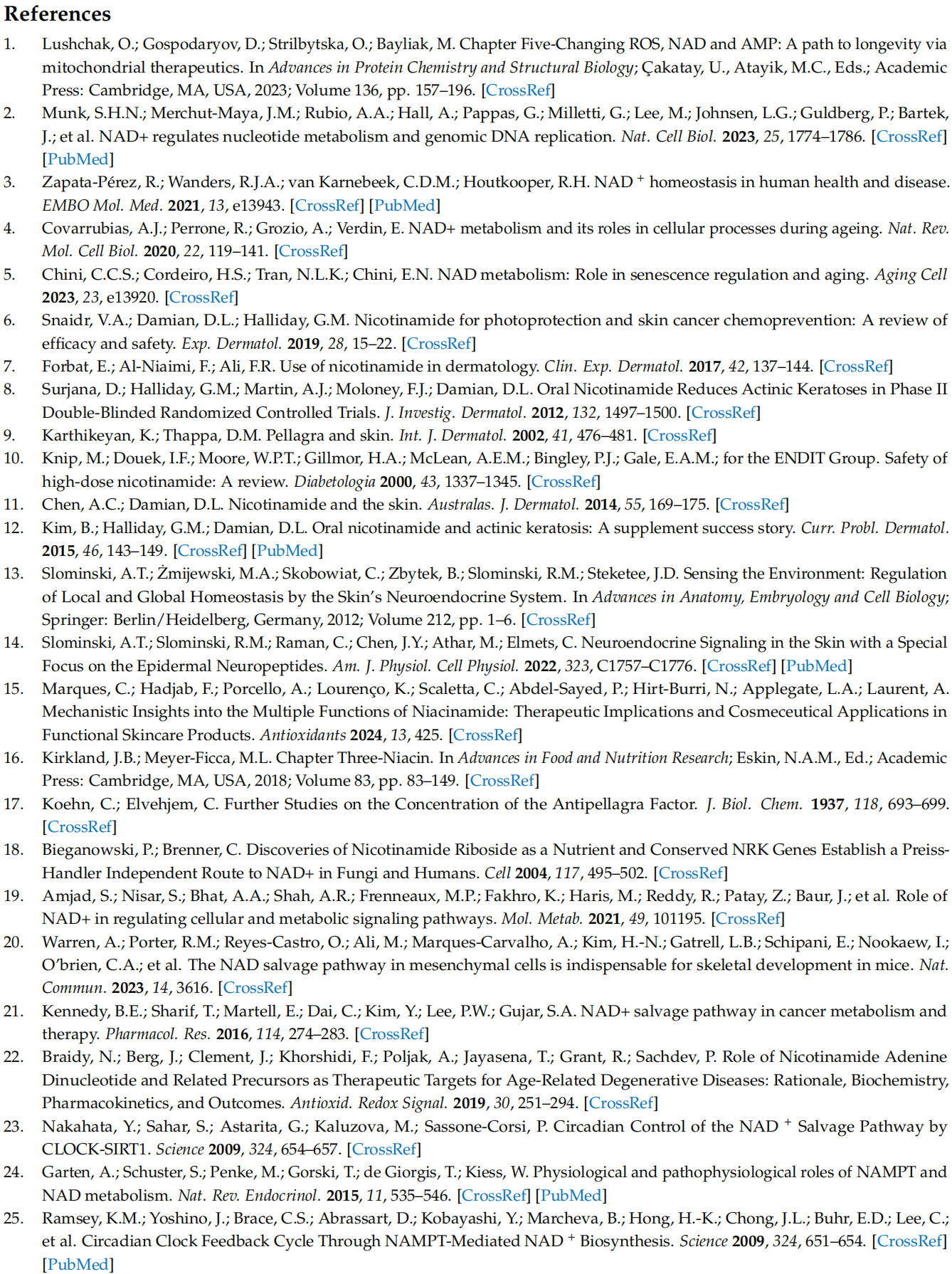
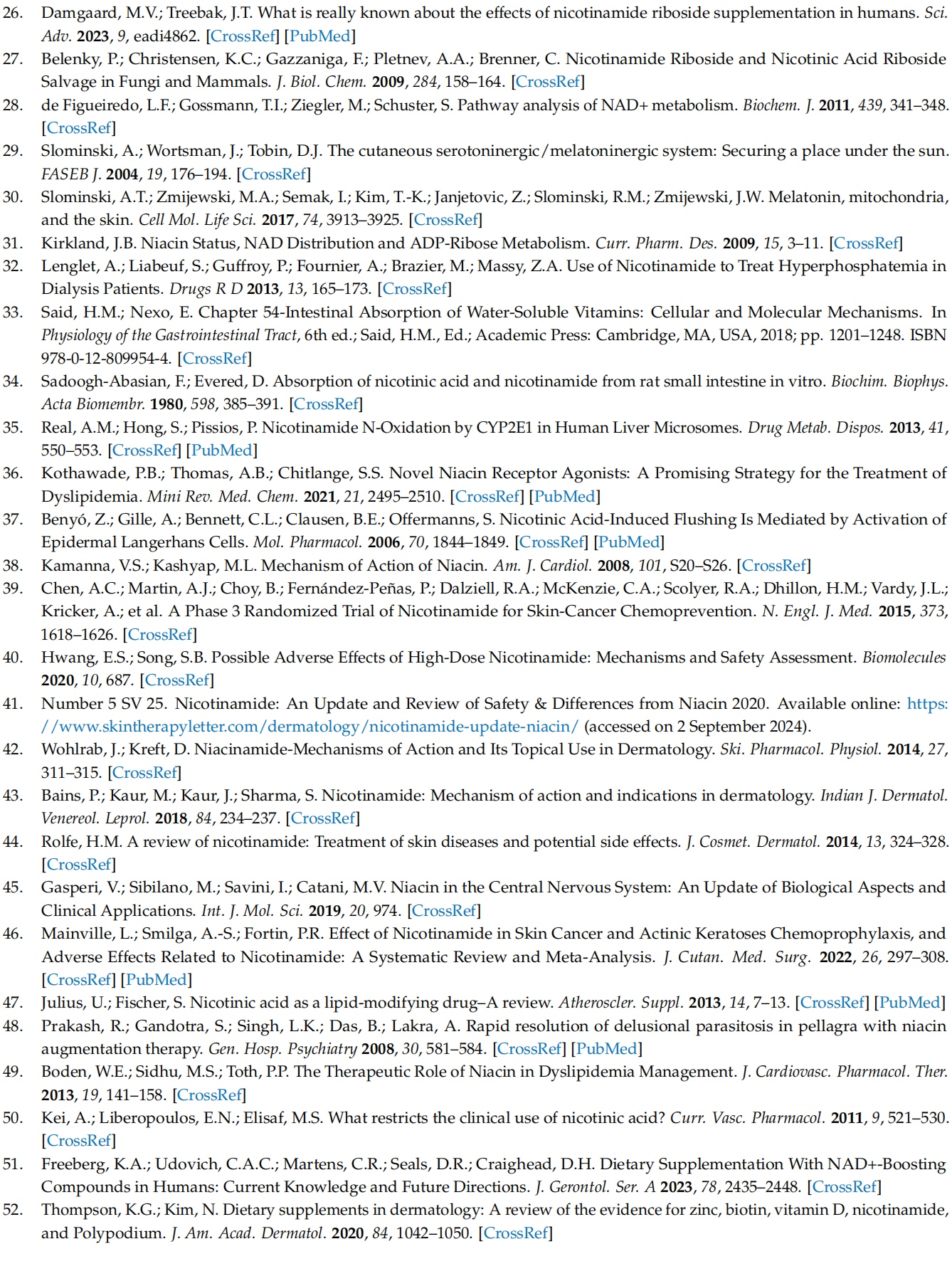
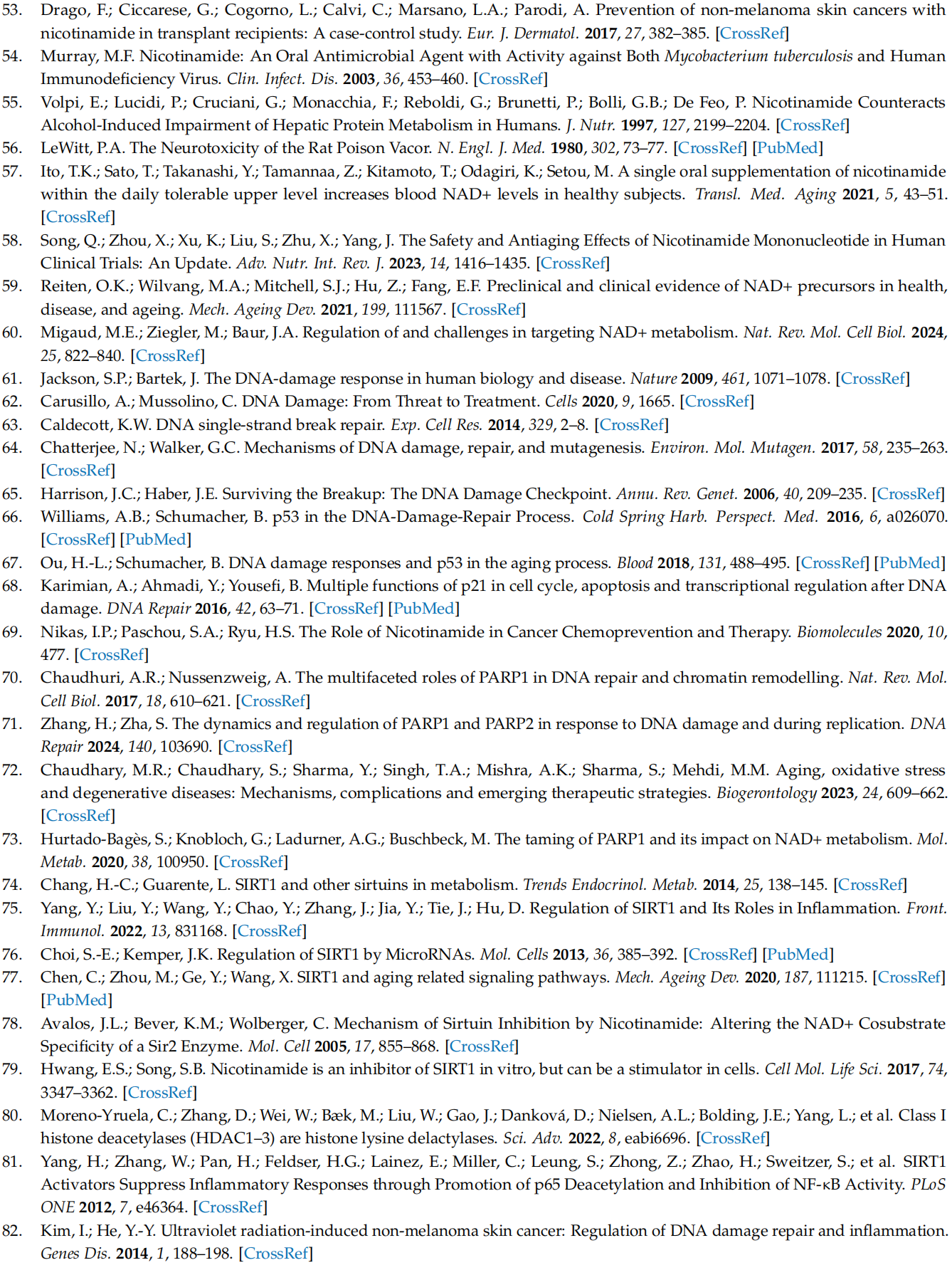
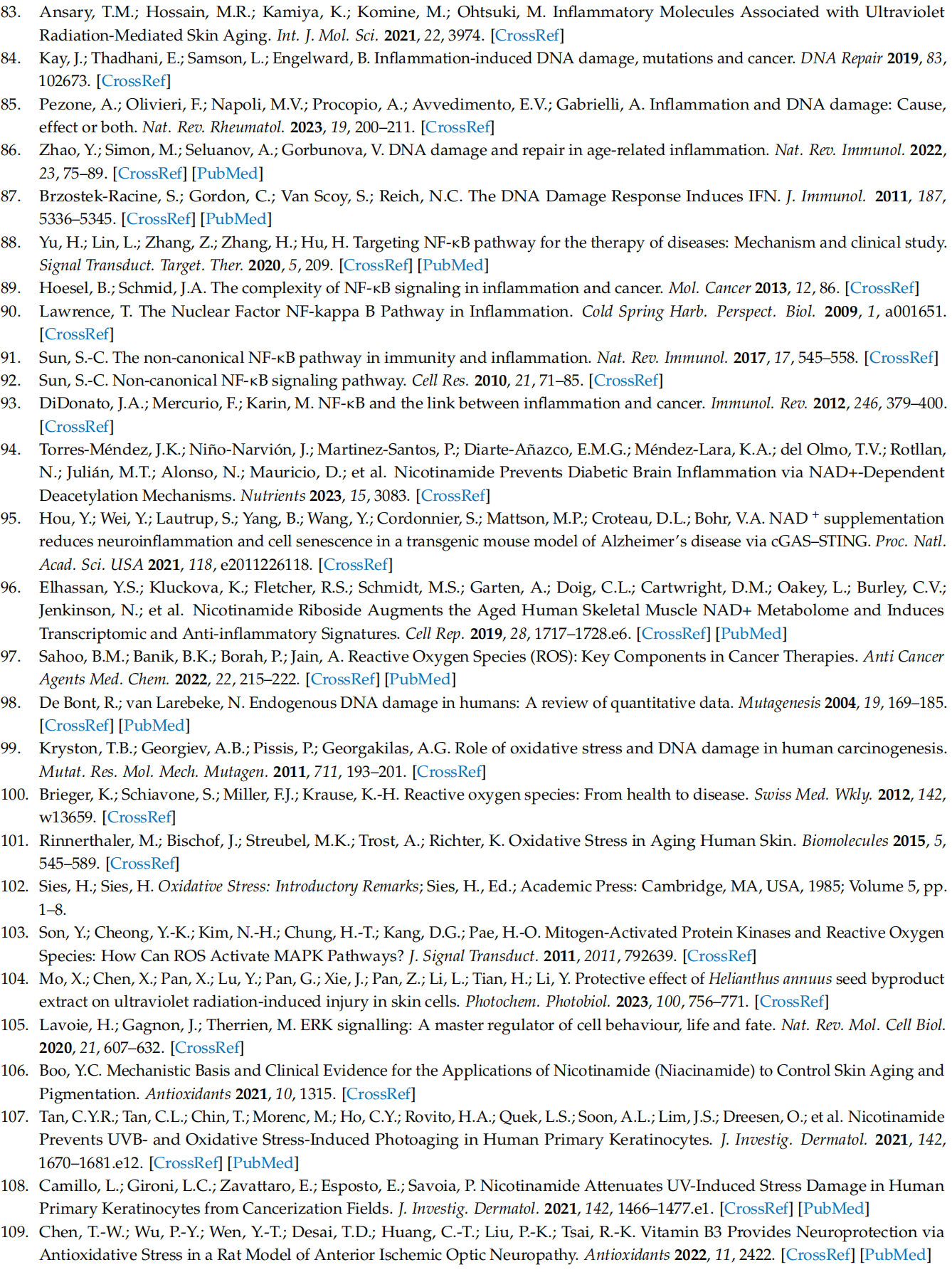
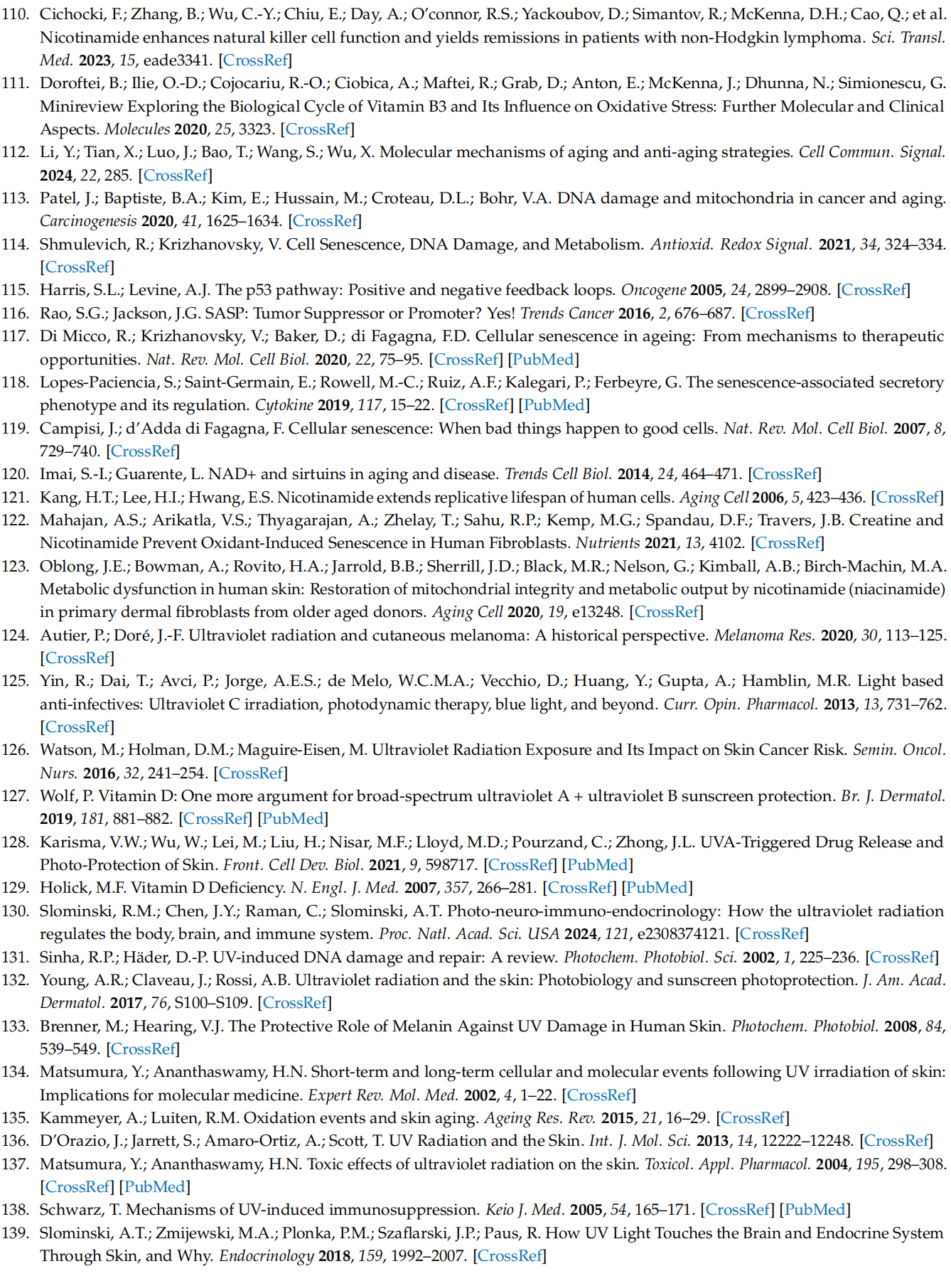

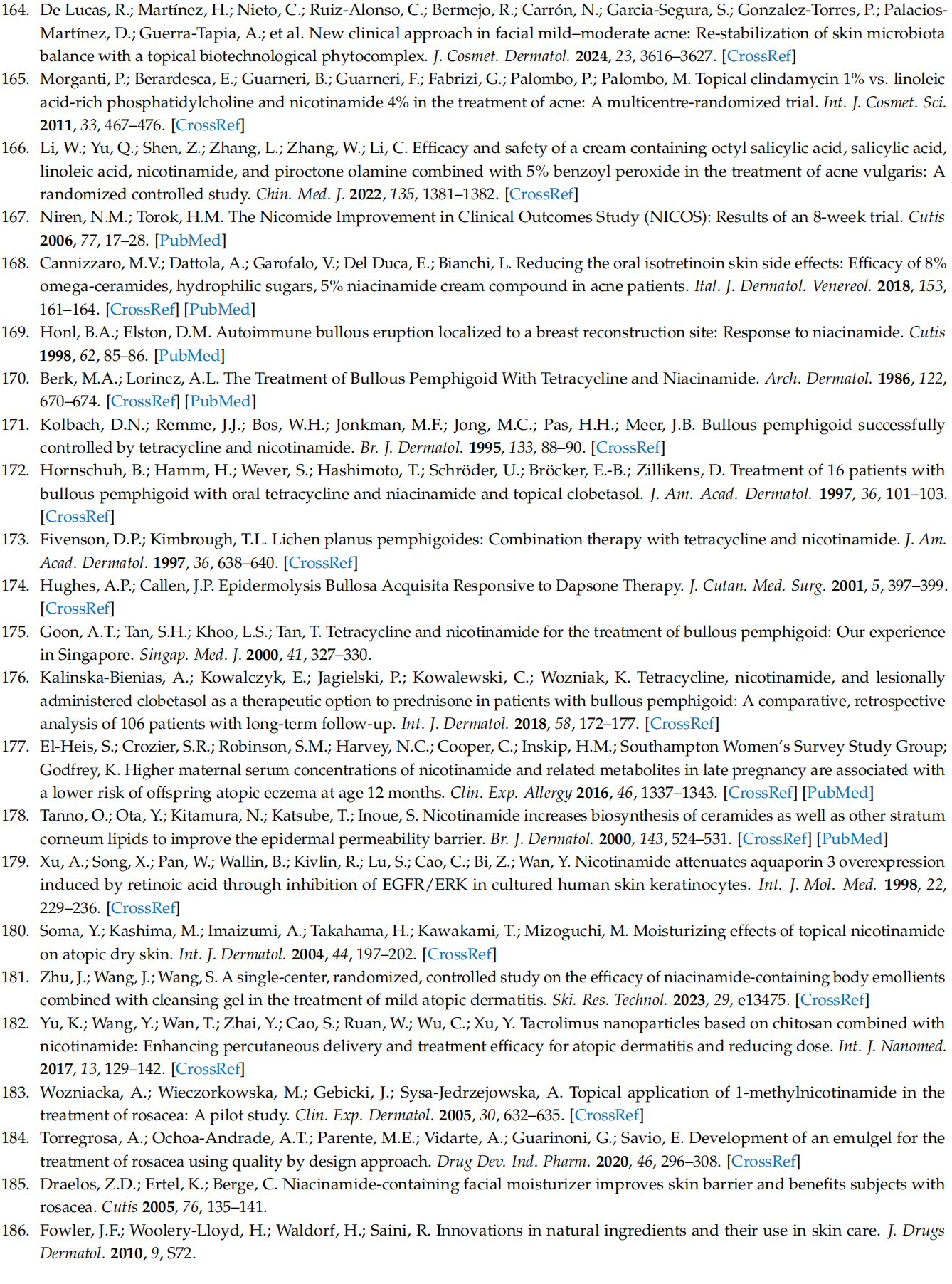
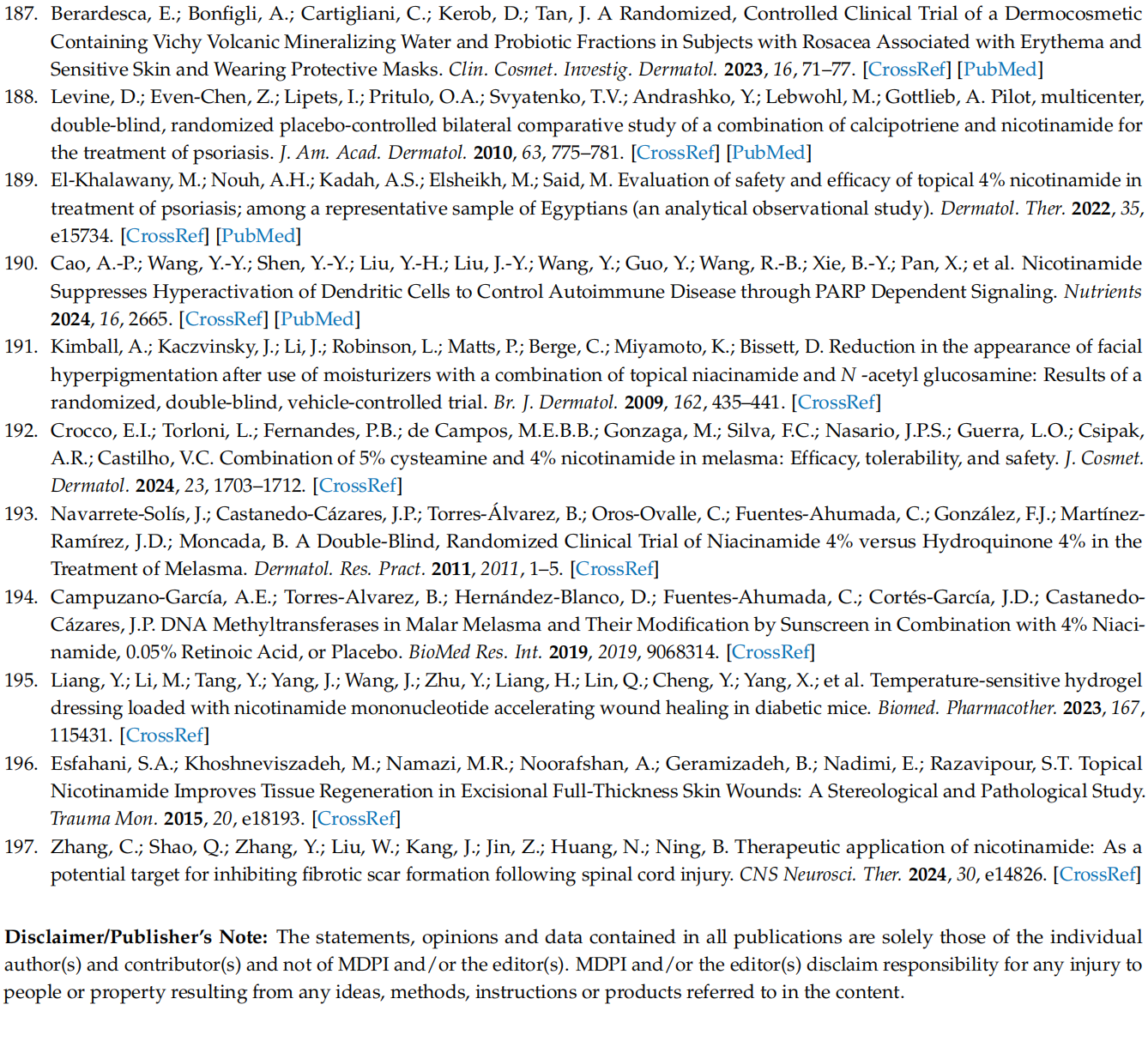
This article is excerpted from the Medicina 2025, 61, 254 by Wound World.
Lara Camillo, Elisa Zavattaro and Paola Savoia *
Department of Health Science, Università del Piemonte Orientale, 28100 Novara, Italy;
该Email地址已收到反垃圾邮件插件保护。要显示它您需要在浏览器中启用JavaScript。 (L.C.); 该Email地址已收到反垃圾邮件插件保护。要显示它您需要在浏览器中启用JavaScript。 (E.Z.)
* Correspondence: 该Email地址已收到反垃圾邮件插件保护。要显示它您需要在浏览器中启用JavaScript。; Tel.: +39-0321-373-3387
Academic Editor: Adam Reich
Received: 30 December 2024
Revised: 23 January 2025
Accepted: 27 January 2025
Published: 1 February 2025
Citation: Camillo, L.; Zavattaro, E.; Savoia, P. Nicotinamide: A
Multifaceted Molecule in Skin Health and Beyond. Medicina 2025, 61, 254.
https://doi.org/10.3390/ medicina61020254
Copyright: © 2025 by the authors. Published by MDPI on behalf of the Lithuanian University of Health Sciences. Licensee MDPI, Basel, Switzerland. This article is an open access article distributed under the terms and conditions of the Creative Commons Attribution (CC BY) license (https://creativecommons.org/ licenses/by/4.0/)
Abstract: Nicotinamide (NAM), the amide form of vitamin B3, is a precursor to essential cofactors nicotinamide adenine dinucleotide (NAD+ ) and NADPH. NAD+ is integral to numerous cellular processes, including metabolism regulation, ATP production, mitochondrial respiration, reactive oxygen species (ROS) management, DNA repair, cellular senescence, and aging. NAM supplementation has demonstrated efficacy in restoring cellular energy, repairing DNA damage, and inhibiting inflammation by suppressing proinflammatory cytokines release. Due to its natural presence in a variety of foods and its excellent safety profile—even at high doses of up to 3 g/day—NAM is extensively used in the chemoprevention of non-melanoma skin cancers and the treatment of dermatological conditions such as blistering diseases, atopic dermatitis, rosacea, and acne vulgaris. Recently, its anti-aging properties have elevated NAM’s prominence in skincare formulations. Beyond DNA repair and energy replenishment, NAM significantly impacts oxidative stress reduction, cell cycle regulation, and apoptosis modulation. Despite these multifaceted benefits, the comprehensive molecular mechanisms underlying NAM’s actions remain not fully elucidated. This review consolidates recent research to shed light on these mechanisms, emphasizing the critical role of NAM in cellular health and its therapeutic potential. By enhancing our understanding, this work underscores the importance of continued exploration into NAM’s applications, aiming to inform future clinical practices and skincare
Keywords: nicotinamide; chemoprevention; skin health; cellular oxidative stress; DNA damage; photoaging; ultraviolet radiation; inflammation; vitamin B3






















This article is excerpted from the Medicina 2025, 61, 254 by Wound World.
